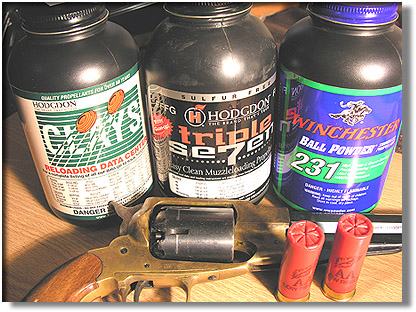

|
|
Ammunition.. You should know a little something about what type of ammo your particular pistol likes to eat. There are all kinds of ammo made in all calibers. But for starters you've got to be sure to get the right caliber of ammo for your gun. First thing: check the chamber hood to find out what caliber ammo your gun shoots.
|
|
|
Now that you know what caliber of pistol you've got, you may safely go and buy a box of ammo that is guaranteed to work in it. The ammo is factory fresh, made by a machine and made of brand new components. Take a look at the ammo at the local gun shop. Once you find the right caliber you must choose which type of bullet heads are available The kind of shooting you do depends on the type of bullet. For instance, if you're target shooting you'll want a flat-point like the 4th & 6th from right above. Flat-points or wad-cutters will punch a nice hole in the target and score more points. If you're hunting you'll use a semi-jacketed hollow point like the 1st, 3rd, & 5th from the left. These bullets will expand & hold together under heavy impact. |
|
|
|
|
The photo on the left shows the simplicity with which a bullet is reloaded. Stuff the primer into the bottom of the "shell", put the powder in (that's 4.5grains of Winchester Western 231 powder) and seat the bullet. Voila ~ You can get real fancy and use a Dillon-1000 reloading machine like I did. But we all come home to the simple life. The Dillon RL550 is just fine by me. It can crank out 500 rounds an hour of any caliber.
|
 |
A head-stamp can tell
you the type of casing. For example the 3 on the right are marked "RP
45 COLT". It stands of Remington Peters .45 Colt.
If you get into reloading, life can be much easier, but it comes with a cost. An investment in money and your time in learning. But for many folks reloading is equally as enjoyable as shooting itself. |
|
Home .. About
the instructor .. About the course
.. Cleaning & Maintenance .. Choosing
a Pistol .. Pistol Skills ..
Ammunition .. Gun Handling Safety
.. Shooting Sports .. Applying
for Permit